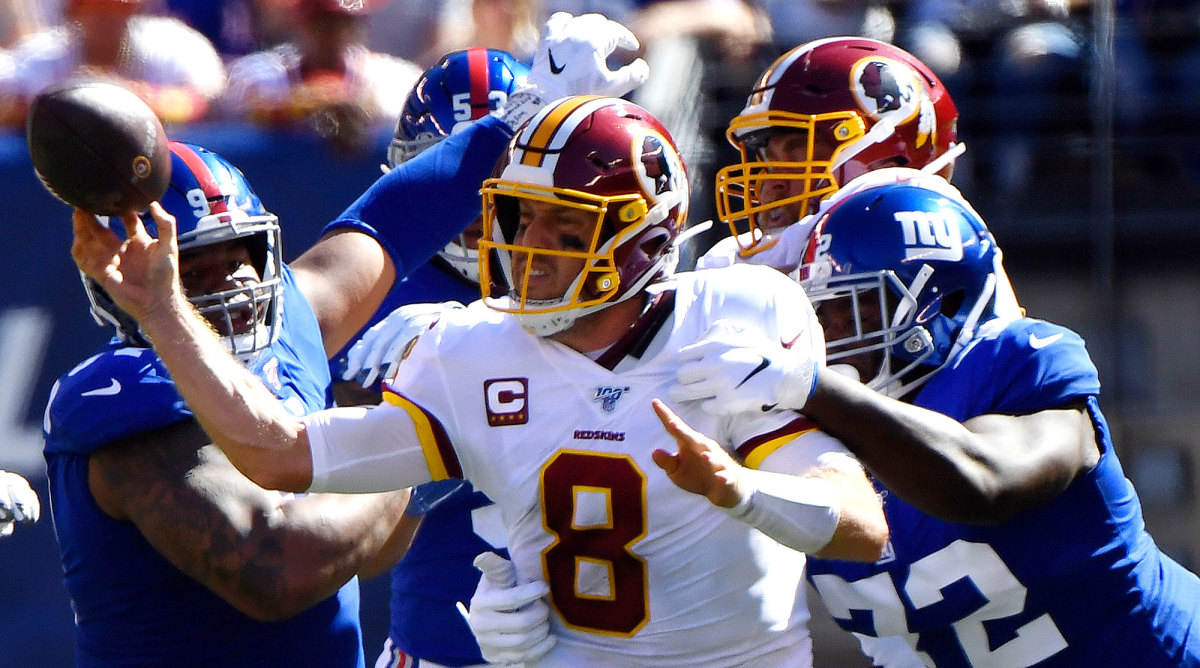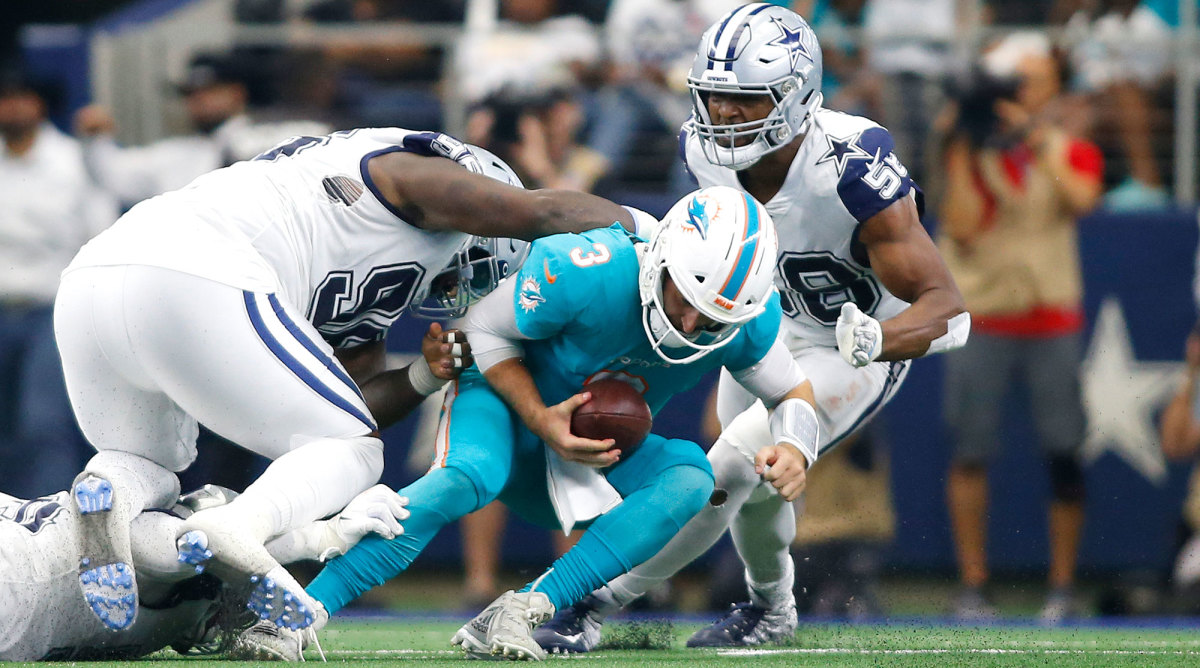How We Arrived at One of the Worst Games in Modern NFL History


There’s a chance that this Sunday’s game between the 0-4 Dolphins and 0-5 Washington is fine from an aesthetic standpoint, finally giving both teams a below-average enough opponent to match up against that the end product is a somewhat competitive football game.
But there’s a chance it resembles the 2012 Olympic badminton tournament, displaying nakedly one team’s quest to bottom out for an eventual advantage.
And there’s also a chance it’s a bumbling mess; the kind of drunken monster-truck smash that we’re all hoping it will be. I know I’ll be watching with curiosity.
Before we get deep into the matchup, let's take a minute to digest the sadness of what we’re about to see (h/t to the NFL’s research department):
• This is the deepest into the season (Week 6) we’ve seen two winless teams face off since 2004 when the Bills and Dolphins met for a 20-13 fireworks show.
• The Dolphins are currently dead last in the NFL in: Total defense, points surrendered, rushing yards surrendered, third down defense, red zone defense, explosive plays surrendered, yards per play allowed, offensive scoring, rushing yards gained, turnovers committed, red zone scoring and turnover differential.
• Washington is second- or third-to-last in: Third-down conversion rate, points allowed and third down defense.
• These two teams are currently on pace to have the first three picks in the 2020 draft
This game is a big deal because we’re talking about two winless, flare-less teams ... and it’s only mid-October. Increased interest in the administrative inner-workings behind the on-field product have made this a flashpoint of sorts for where the NFL is going and how teams can rise to the top faster than before. The Ringer posited, in part, that this is a side effect of the schematic revolution: Most quarterbacks are at least good enough now in their passer-friendly systems, which forces the few teams with excellent quarterbacks into a higher tier (New England) and the few teams with below average quarterbacks (Washington, Miami) into a lower, unseen tier.
I think this is true. I also think that this particular matchup could simply be the result of years of aggressive mediocrity; this is what happens when it’s finally time for a franchise to reckon with the mistakes they’ve made over a prolonged period of time. If you’re into football anthropology, Sunday is a fascinating case study in the collision of teams who have refused to admit that there were serious, structural flaws on their roster over an incredibly long (by NFL standards) period of time and the different ways they respond.
The Dolphins are like your parents who, after years of grumbling over too-high utility costs and property taxes, watch a single episode of Building Off The Grid on the DIY Network and decide to move the family into a self-sustaining mud hut deep in the forest somewhere. Pull the plug all at once and rebuild sustainably.
Washington is like that executive from Sears who, after years of ignoring the steamrolling threat of e-commerce, holds a meeting and fires anyone working for the web team. Folks, brick and mortar is going to make a comeback, just trust me on this one. Continue with the single-minded belief that you know how the game works, and barrel into irrelevance.

So, how did we get here?
Both Washington and Miami seem to have spent the better part of the last six years floating in football purgatory. Since 2012, the Dolphins have made the playoffs once and Washington twice, and neither team has won a postseason game since at least the ’05 season. Their regular-season records from the 2012 season on:
WAS: 48-63-1
MIA: 52-60
Since 2012, both teams have ranked among the NFL’s biggest spenders when it comes to offseason free-agency. Washington cracked the top 10 four times (and finished just outside the top 10 this past March) and Miami three times. Think, for a moment, about how cataclysmic one really bad free-agency splurge could be (for example, the Giants’ Save Eli and Jerry Reese spending binge of 2016, which crippled the team financially for three seasons but created enough adrenaline for one playoff push). Now, imagine that happens a few times in a half-dozen years—multiple times in the lifespan of a franchise quarterback on his rookie deal.
Though it’s difficult to find a centralized statistic for free-agency value, I thought Steven Ruiz over at USA Today captured the spirit of the genre with his VAMP statistic, which combines Pro Football Focus performance grades and time spent on the field with market price. Not surprisingly, in a snapshot of one offseason, the Dolphins and Washington are among the worst teams in the NFL in getting the most out of their money.
Expand that over a larger window to include the Dolphins’ 2013 binge—headlined by Mike Wallace, Dannell Ellerbee and Dustin Keller—or Washington’s ’14 spree on Jason Hatcher, DeSean Jackson and Shawn Lauvao, or Miami’s ’15 acquisitions of Ndamukong Suh and Jordan Cameron. It’s easy to see an almost systematic pattern between both teams to panic-spend themselves into the playoffs when it becomes clear that the roster isn’t good enough, instead of using the medium to get incrementally and sustainably better.
Plenty of good teams hoist themselves up with free agency. The Eagles, Patriots and Rams are perfect examples of teams who, for the most part, stockpile high value free agents and hit on the top-of-market expenditures when they do make them. Those players almost always become an essential part of the team’s fabric from an emotional standpoint as well.
The problem comes when teams gamble big and lose consistently, especially at times when an obvious teardown is in order. Miami and Washington may be the two teams who have ignored the deepening cracks on their roster for the longest. Plaster on top of plaster, hiding a gaping hole in the wall.
That’s part of the reason you’ll get here in this almost comedic parallel universe. The Dolphins realized there was a problem and decided to tank, but may have tanked too hard, putting themselves in a situation where the crash landing might burn up the entire landscape. They are on pace to be one of the worst teams in modern NFL history this season. Washington, once again, has blamed their failures on the coaching staff and heads into this weekend with the interim Bill Callahan calling plays. Their major takeaway? We haven’t seen nearly enough of 34-year-old running back Adrian Peterson.
Best of luck to all parties involved.
Question or comment? Email us at talkback@themmqb.com.
